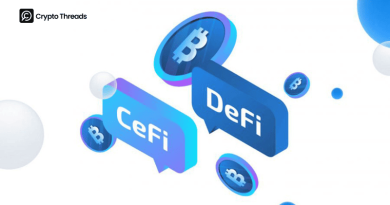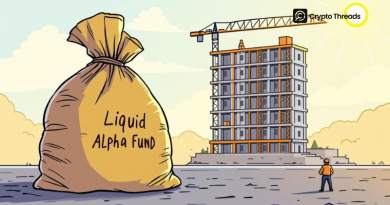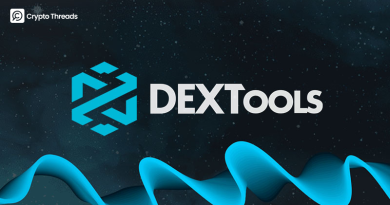What Are Crypto Points?
Understanding Crypto Points: The Foundation
Crypto points represent a sophisticated reward system that Web3 projects use to assign value to specific user behaviors and activities. Think of them as digital loyalty points, but with far greater potential and complexity. These systems serve as powerful tools that enable project developers to gamify their protocols, support governance initiatives, prevent airdrop farming, and create meaningful engagement incentives.
Unlike traditional tokens, crypto points typically operate as centralized systems managed directly by the projects themselves, rather than being recorded on the blockchain. However, this centralization gives projects greater control over distribution and timing, which can be both an advantage and a point of consideration for users.
What makes crypto points particularly fascinating is their role as bridges to future value. These points can potentially convert into cryptocurrency payments or other valuable rewards, creating anticipation and sustained engagement within project communities. To date, at least 12 major cryptocurrency projects have distributed over 40 billion points to thousands of users worldwide, demonstrating the massive scale and growing importance of this mechanism.
The Evolution and Purpose of Crypto Points
To truly understand crypto points, we need to examine how they evolved from the traditional airdrop model. In previous years, cryptocurrency projects would suddenly airdrop tokens to users who had previously interacted with their platforms. While this often brought unexpected profits to recipients, it also led to a significant problem: airdrop farming.
Airdrop farming occurs when speculators strategically create high levels of activity across projects they predict might conduct airdrops, purely to capture larger shares if such distributions occur. This behavior often lacks genuine engagement with the project’s long-term goals and can distort the intended purpose of community rewards.
Crypto points emerged as an evolutionary solution to this challenge. They allow projects to incentivize specific activities while maintaining control in the hands of project founders. This system creates what we might call “earned anticipation” – users must demonstrate sustained engagement to accumulate meaningful point balances, and projects retain the flexibility to determine if, when, and how these points convert to tangible rewards.
How Crypto Points Function in Practice
The implementation of crypto point systems varies significantly depending on each project’s specific objectives and use cases. Understanding these different applications helps us appreciate the versatility and strategic value of point-based incentive structures.
Incentivizing Targeted Activities
Projects can deploy point systems to encourage behaviors that directly benefit their ecosystems. For example, a decentralized storage project might reward points to users who contribute storage space or upload files to the network. These points can later be exchanged for tokens or other rewards, creating a direct connection between valuable actions and potential compensation.
This approach proves particularly effective because it aligns user incentives with project needs. Rather than hoping users will organically engage in beneficial behaviors, projects can clearly signal which actions they value most and provide immediate feedback through point accumulation.
Gamification and Community Engagement
Many cryptocurrency projects integrate gamification elements through point systems to make platform interaction more engaging and enjoyable. Users earn points by completing tasks, reaching milestones, or participating in community challenges. These points often appear on leaderboards or unlock badges and virtual rewards, fostering healthy competition and community participation.
The psychological impact of gamification should not be underestimated. By transforming routine interactions into achievement-oriented activities, projects can significantly increase user engagement and create stronger emotional connections between users and the platform.
Bridging to Official Tokens
In numerous cases, points serve as intermediate steps before users can access a project’s native tokens. Users accumulate points through various activities, then convert these points into tokens at predetermined exchange rates. This approach can facilitate more equitable token distribution and encourage early adoption and participation before the complete token ecosystem launches.
This bridging function proves especially valuable during project development phases. It allows teams to build engaged user bases and test economic models before committing to final tokenomics structures.
Why Web3 Projects Increasingly Favor Crypto Points
The growing adoption of crypto point systems among Web3 projects reflects several strategic advantages that address common challenges in decentralized protocol development and community building.
Preventing Airdrop Farming
Traditional airdrop farming involves strategic participation in projects solely to maximize potential rewards, often without genuine long-term engagement. Crypto point systems combat this by requiring sustained participation within the ecosystem to convert points into meaningful financial benefits. This creates natural barriers against purely extractive behavior while rewarding genuine community members.
The sustained engagement requirement means that farmers must invest significant time and attention, making their participation more valuable to projects even if their initial motivations remain purely financial.
Creating Powerful Participation Incentives
By offering points for diverse activities such as interacting with decentralized applications, participating in governance, providing liquidity, or referring new users, projects can transform passive users into active participants. This transformation represents one of the most significant challenges in Web3 adoption – moving from speculative interest to genuine utility engagement.
The beauty of point systems lies in their ability to provide immediate gratification for positive behaviors while building toward larger future rewards. This dual-timeline approach addresses both short-term motivation and long-term value creation.
Building Cohesive Communities
Crypto points help create dynamic and cohesive communities around projects. Users become motivated to earn and accumulate points, leading to increased participation in discussions, events, and community initiatives. This community cohesion contributes significantly to project growth and sustainability.
Strong communities often become self-reinforcing systems where engaged members attract and mentor new participants, creating organic growth cycles that extend far beyond initial point incentives.
Driving Widespread Adoption
Offering crypto points as rewards can attract new users to project ecosystems. People interested in earning points develop motivation to explore project services, leading to broader adoption of applications and services. This user acquisition mechanism often proves more cost-effective than traditional marketing approaches.
The exploration process typically leads to genuine value discovery, as users who initially arrive for points often remain for utility and community benefits.
Enhancing Decentralized Governance
Crypto points can link directly to governance rights within project ecosystems. Users holding certain point thresholds may receive voting rights for governance proposals, giving them voice in future project direction and development. This creates pathways for community members to gain meaningful influence over projects they actively support.
The connection between participation and governance rights helps ensure that decision-making power flows to stakeholders who demonstrate genuine engagement rather than simple token ownership.
Key Differences Between Crypto Points and Cryptocurrencies
Understanding the fundamental distinctions between crypto points and traditional cryptocurrencies helps clarify their respective roles and limitations within Web3 ecosystems.
Crypto points differ fundamentally from cryptocurrencies because the points themselves lack direct monetary value. While cryptocurrencies like Bitcoin have clear market prices and market capitalizations, crypto points do not possess these characteristics until they convert into actual tokens or rewards.
Additionally, Web3 projects must designate and track crypto point distributions themselves, contrasting with cryptocurrencies that record automatically on decentralized ledgers called blockchains. This centralized management gives projects greater control but also requires more trust from users regarding fair and transparent point accounting.
The temporal nature also differs significantly. Cryptocurrencies exist as immediately tradeable assets, while crypto points represent potential future value that depends on project decisions and conversion mechanisms.
Real-World Examples of Crypto Point Implementation
Examining successful crypto point implementations provides concrete understanding of how these systems operate in practice and their potential impact on project growth and community development.
EigenLayer – Restaked Points
EigenLayer, a restaking protocol on Ethereum, created one of the largest point programs in crypto history. Users earn “Restaked Points” based on the amount of ETH and liquid staking tokens they deposit into the platform and the duration they maintain these positions. With over $16 billion in Total Value Locked in just the first year, EigenLayer’s point system drove massive adoption even before the official EIGEN token launch.
Grass Network – Bandwidth Sharing
Grass Network operates on a DePIN (Decentralized Physical Infrastructure) model, allowing users to earn Grass Points by sharing unused internet bandwidth to support data collection for AI training. The project successfully distributed 100 million GRASS tokens to 2.8 million users globally in Stage 1, becoming one of the most widely distributed airdrops on Solana.
Arbitrum Odyssey with Galxe
The Arbitrum Odyssey program hosted on the Galxe platform attracted 1.67 million participants with 17 exclusive NFTs. Users earned points by interacting with projects throughout the Arbitrum ecosystem, from bridging and DeFi to NFTs and gaming. This program demonstrated the power of combining crypto points with gamification to drive community engagement.
LayerZero – Cross-chain Interaction
While LayerZero doesn’t directly operate a point system, many projects within their ecosystem like Stargate Finance have used points to incentivize cross-chain user interaction. Their connection of over 70 major blockchains and processing of over $50 billion in cross-chain transactions shows the powerful impact of incentivization through point systems.
The Future Implications and Considerations
As crypto point systems continue evolving, several important considerations emerge that will shape their future development and adoption across Web3 projects.
The scalability of point systems presents both opportunities and challenges. As projects grow larger, managing centralized point systems becomes more complex, potentially necessitating migration to blockchain-based tracking or hybrid approaches that balance control with transparency.
Regulatory considerations also play increasingly important roles. As point systems grow in value and scope, they may attract regulatory attention, particularly regarding their potential classification as securities or their role in project fundraising activities.
The standardization of point systems across projects could enhance user experience by creating more predictable and portable reward mechanisms. However, this standardization might also reduce the strategic differentiation that point systems currently provide to innovative projects.
Conclusion: The Strategic Value of Crypto Points
Crypto points represent a significant advancement in how Web3 projects interact with their user communities. Rather than relying solely on traditional airdrops, point systems enable better control, encourage long-term participation, and build sustainable communities around project development.
Understanding crypto points thoroughly benefits not only users seeking to maximize opportunities within Web3 ecosystems, but also provides insights into how modern blockchain projects approach community building and user engagement. As more projects adopt these models, mastering crypto point dynamics becomes a crucial competitive advantage for anyone looking to participate meaningfully in the Web3 landscape.
The evolution of crypto points reflects broader trends toward more sophisticated tokenomics and community engagement strategies. Projects that successfully implement point systems often see stronger community retention, more genuine user engagement, and more sustainable growth patterns compared to those relying solely on speculative token incentives.
Looking ahead, crypto points will likely become even more integral to Web3 project development, serving as testing grounds for tokenomics, community governance mechanisms, and user engagement strategies. For participants in the Web3 space, developing deep understanding of these systems represents not just an opportunity for potential rewards, but insight into the fundamental mechanics driving the next generation of decentralized applications and communities.
The sophistication and scale of current point systems suggest they represent more than a temporary marketing trend – they appear to be evolving into fundamental infrastructure for Web3 community building and user alignment. As such, both users and developers benefit from approaching these systems with strategic understanding rather than purely opportunistic participation.



